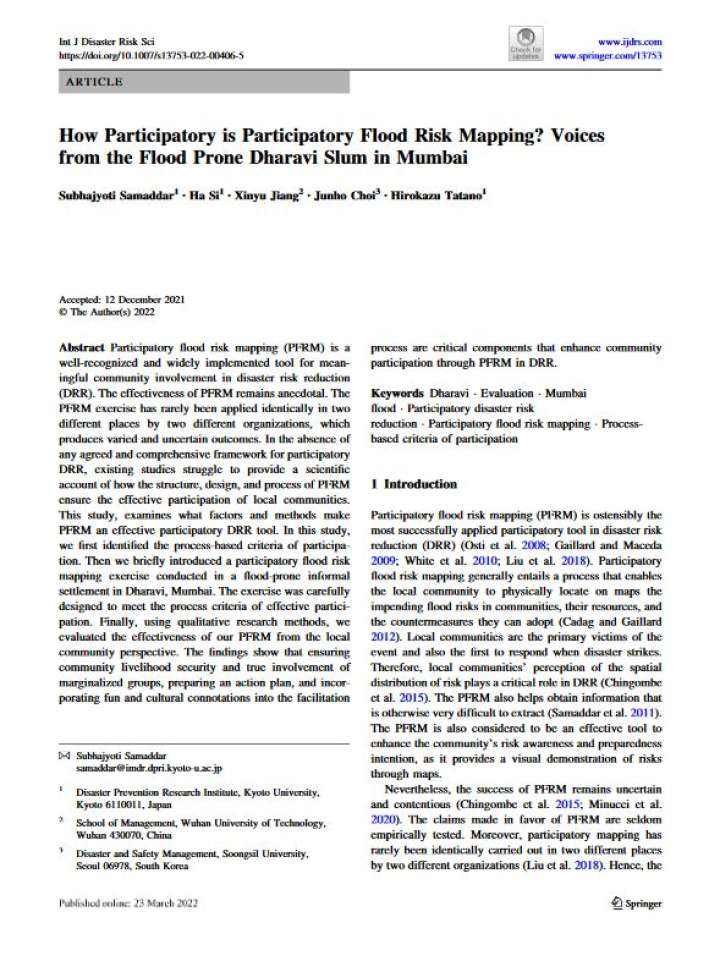How participatory is participatory flood risk mapping? Voices from the flood prone Dharavi slum in Mumbai
This study, examines what factors and methods make participatory flood risk mapping (PFRM) an effective participatory disaster risk reduction (DRR) tool. Participatory flood risk mapping is a well-recognized and widely implemented tool for meaningful community involvement in disaster risk reduction. The effectiveness of PFRM remains anecdotal. The PFRM exercise has rarely been applied identically in two different places by two different organizations, which produces varied and uncertain outcomes. In the absence of any agreed and comprehensive framework for participatory DRR, existing studies struggle to provide a scientific account of how the structure, design, and process of PFRM ensure the effective participation of local communities.
In this study, the authors first identified the process-based criteria of participation. Then we briefly introduced a participatory flood risk mapping exercise conducted in a flood-prone informal settlement in Dharavi, Mumbai. The exercise was carefully designed to meet the process criteria of effective participation. Finally, using qualitative research methods, we evaluated the effectiveness of our PFRM from the local community perspective. The findings show that ensuring community livelihood security and true involvement of marginalized groups, preparing an action plan, and incorporating fun and cultural connotations into the facilitation process are critical components that enhance community participation through PFRM in DRR.
Explore further
